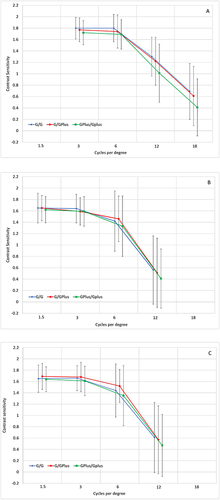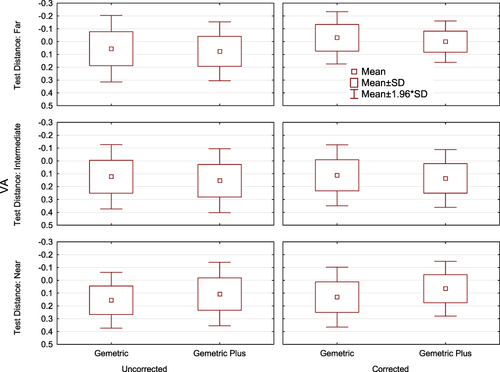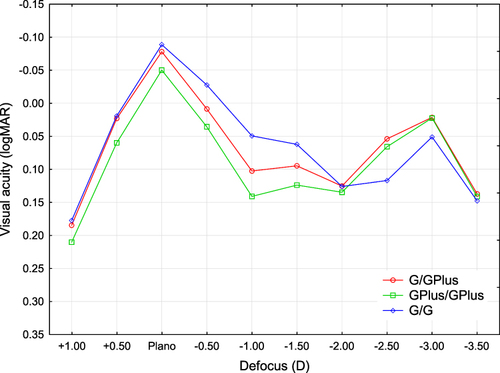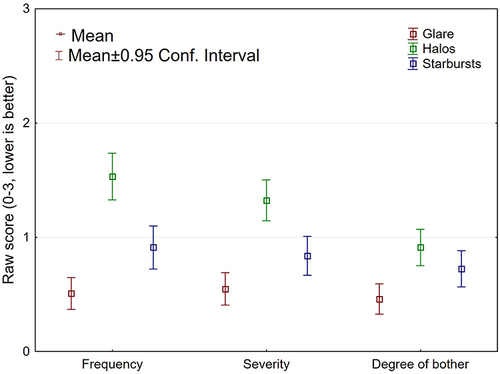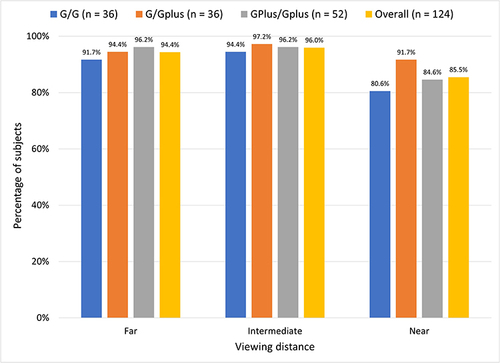Figures & data
Figure 1 Gemetric and Gemetric Plus diffractive trifocal design elements (Courtesy Hoya, used with permission).
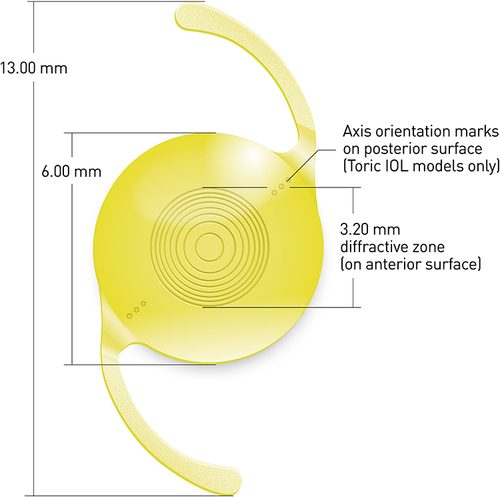
Figure 2 Comparison of the through-focus modulation transfer function by IOL (Courtesy Hoya, used with permission).
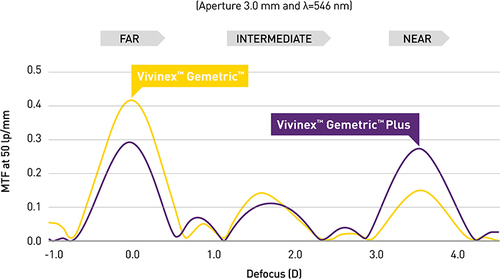
Table 1 Principal Investigator List, NINO Study
Table 2 Group Summary for Analysis
Figure 3 The distribution of refractive outcomes at 6 months postoperative. (A) Mean refraction spherical equivalent (MRSE). (B) Postoperative refractive cylinder.
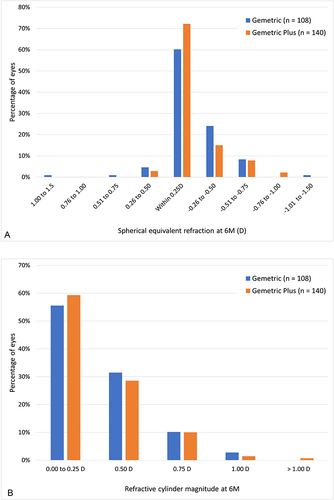
Figure 5 Binocular uncorrected and distance corrected visual acuities by distance and study group. (A) Uncorrected. (B) Distance corrected.
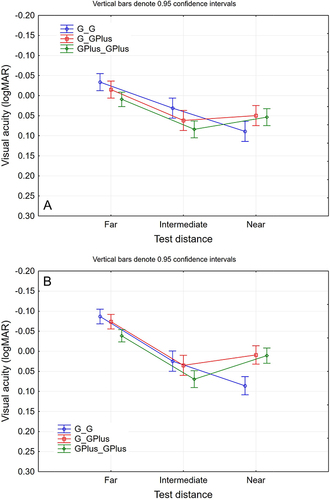
Figure 6 Binocular distance corrected visual acuities in photopic and mesopic conditions by study group and distance.
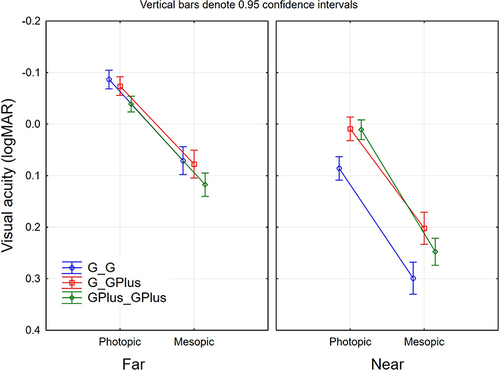
Figure 8 Contrast sensitivity results by study group and test condition. (A) Photopic with glare, (B) Mesopic without glare, (C) MEsopic with glare.
